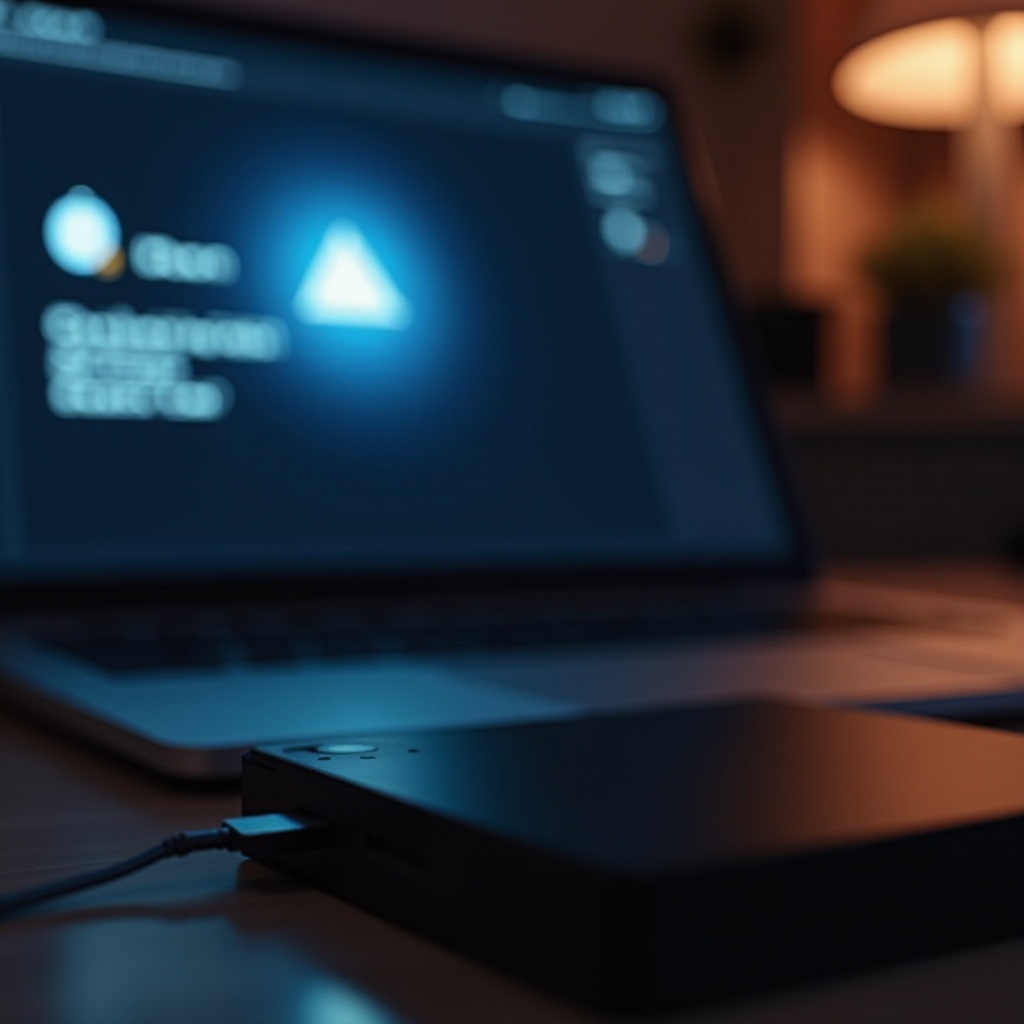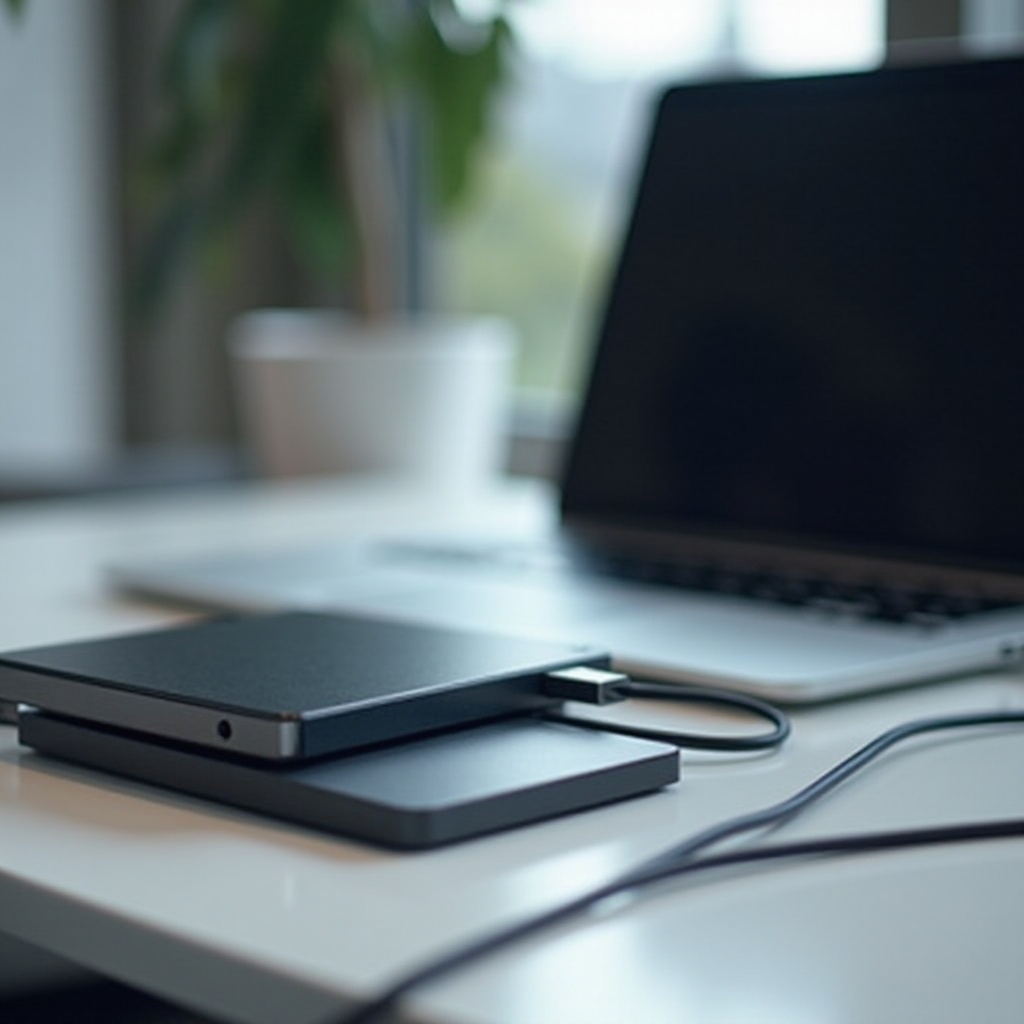Introduction
External hard drives are crucial for backing up data, storing large files, and transferring information between computers. However, they can sometimes fail to appear on your device, leading to frustration and concern over inaccessible data. Don’t worry—many issues can be resolved with a step-by-step troubleshooting approach. This guide will help you uncover the cause and fix it, ensuring access to your valuable data once more.

Initial Diagnostic Steps
Starting with basic checks is essential to resolve common hardware issues:
-
Check Physical Connections: Ensure the USB cable is securely attached to both the external hard drive and your computer. A loose connection can prevent recognition.
-
Verify Power Supply: For drives requiring external power, make sure the adapter is plugged in and working properly.
-
Test on Alternative USB Ports: Connect the hard drive to different USB ports on your computer or another computer to identify port-related issues.
Transitioning from these basic checks, let’s delve into software-related solutions to combat detection problems.
Software Solutions
Software issues often cause devices to go unrecognized. Updating drivers and using built-in utilities can usually solve these problems:
-
Update Device Drivers: Outdated drivers could disrupt device detection. Visit the hard drive manufacturer’s website for the latest drivers or use the ‘Device Manager’ tool in Windows to search for updates automatically.
-
Use Device Manager on Windows: In Device Manager, locate the external hard drive under ‘Disk Drives.’ If a yellow exclamation mark is present, right-click and select ‘Update Driver’ or ‘Uninstall Device,’ then restart to reinstall.
-
Access Disk Utility on macOS: Check if the drive appears in Disk Utility. If visible but unmounted, use the ‘First Aid’ feature to repair disk errors.
These initial software checks transition us to specific fixes according to your operating system.
Operating System Specific Fixes
Here’s how to tackle detection issues unique to Windows and macOS:
- Windows 10/11 Specific Solutions:
- Disk Management: Access by right-clicking ‘This PC’ ➜ ‘Manage’ ➜ ‘Disk Management.’ Locate your drive and right-click to ‘Change Drive Letter and Paths’ if necessary.
-
Hardware and Devices Troubleshooter: Go to ‘Settings’ ➜ ‘Update & Security’ ➜ ‘Troubleshoot’ to run the tool.
-
macOS Specific Strategies:
- Mounting with Disk Utility: Select your external drive in Disk Utility and click ‘Mount’ if unmounted.
- Reset SMC: Reset the System Management Controller specific to your Mac model.
With these tailored solutions, let’s move on to advanced techniques for persistent issues.
Advanced Troubleshooting Techniques
Advanced methods may be needed if common solutions fail:
-
Identify Drive Partition Issues: Corrupted partitions can hinder recognition. In Windows, use ‘Disk Management’ to check for ‘Unallocated’ or ‘Not Initialized’ disk spaces. Right-click and initialize or create new volumes.
-
Use Command Line Tools: Windows users can enter
diskpartin Command Prompt; macOS users can use Terminal withdiskutil listto explore further diagnostics.
If advanced solutions don’t work, it might be time to consider hardware-related checks.

Hardware Concerns and Solutions
Consider potential hardware problems if your drive remains undetected:
-
Recognize Signs of Physical Drive Failure: Listen for strange noises like clicking, which might signal mechanical failure. Also, inspect for any visible damage.
-
When to Consider Professional Recovery: If crucial data is at stake, contact data recovery professionals rather than opening the drive yourself.
Now, let’s focus on preventive measures and maintenance to safeguard against repeat issues.

Prevention and Maintenance Tips
Preventative care can enhance reliability and lifespan for external drives:
-
Regular Backup Strategies: Implement consistent backup routines via cloud services or secondary hard drives.
-
Routine Health Checks: Use software tools like ‘CrystalDiskInfo’ or system utilities like ‘CHKDSK’ for Windows to monitor drive condition regularly.
These practices will help prevent future accessibility issues with your external hard drives.
Conclusion
In conclusion, a detailed approach to troubleshooting can identify and resolve why your external hard drive doesn’t show up. By addressing physical connections, updating necessary software, and employing both basic and advanced techniques, you can regain access to your data. Remember to maintain regular backups to prevent data loss.
Frequently Asked Questions
How can I prevent my external drive from not showing up again?
Regular checks on connections, updating software, and ensuring proper power supply can prevent future issues. Backups also protect against data loss.
Is it safe to use third-party tools to fix my drive issues?
Some third-party tools are helpful, but ensure they are reputable. Untrusted applications might cause more harm than good.
What should I do if my drive still isn’t detected after trying all fixes?
Consult a professional technician or the manufacturer’s support if the problem persists. Data recovery specialists can also assist with crucial data.
